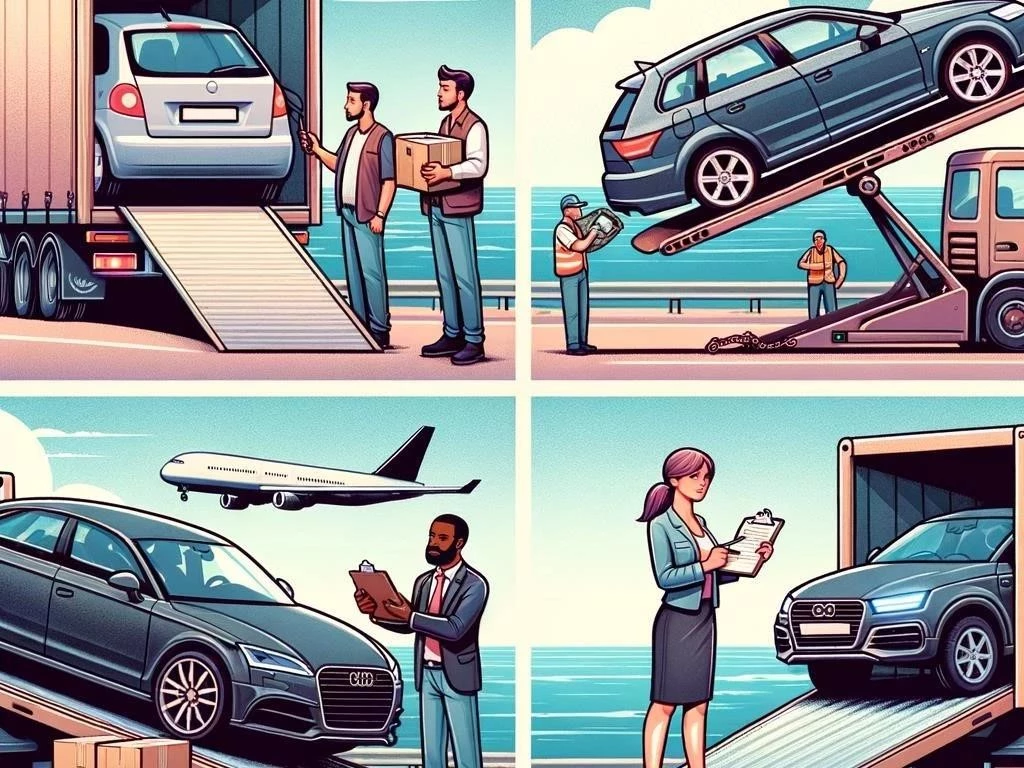How Does Car Shipping Work?
Car shipping involves various logistics, including pickup and delivery, vehicle handling, and insurance coverage, ensuring safe transportation from one location to another efficiently.
Understanding Car Transport Options
When considering car transport, it’s essential to understand the various options available. Open transport is the most popular method, allowing multiple vehicles to be shipped simultaneously, which can lower shipping rates. Alternatively, enclosed transport offers enhanced vehicle safety by protecting the car from weather and road debris, making it ideal for luxury or classic vehicles. Additionally, international shipping involves customs clearance and specific regulations, which must be navigated carefully. Transport companies often provide shipping quotes based on these factors. Understanding your needs will greatly impact your choice, ensuring efficient logistics and a smooth car delivery process tailored to your requirements.

The Shipping Process
The shipping process for vehicles typically begins with requesting shipping quotes from various transport companies. Once a carrier is selected, scheduling pickup and delivery becomes essential. After confirming the details, the vehicle is prepared for transport, which may include cleaning and inspecting for damage. During pickup, drivers will document the vehicle’s condition. The car is then loaded onto either an open or enclosed transport carrier. Throughout the journey, tracking services allow customers to monitor their vehicle’s progress. Upon arrival, a thorough inspection ensures that the vehicle is delivered in the same condition as when it was picked up, ensuring satisfaction.
Types of Vehicle Shipping
There are primarily two types of vehicle shipping: open transport and enclosed transport. Open transport is the most cost-effective choice, allowing multiple vehicles to be shipped together, exposing them to the elements. This method is popular for standard vehicles and offers competitive shipping rates. Conversely, enclosed transport provides superior vehicle safety, protecting cars from weather conditions and road debris. This option is often preferred for luxury, classic, or high-value vehicles. Additionally, long-distance shipping and international shipping might require specific considerations, such as customs clearance. Understanding these types helps customers select the best option based on their vehicle’s needs and budget.
Factors Influencing Shipping Rates
Several factors influence shipping rates for vehicle transport. Distance is a primary consideration; longer routes typically incur higher costs. The type of transport also plays a crucial role; open transport is generally more affordable than enclosed transport due to the latter’s enhanced vehicle safety. Additionally, the size and weight of the vehicle can affect shipping quotes, as larger vehicles may require specialized carrier services. Seasonal demand also impacts rates; peak times often lead to increased pricing. Lastly, insurance coverage and any additional services, such as expedited shipping or customs clearance for international shipping, can further modify overall costs for car delivery.
Ensuring Vehicle Safety During Transport
Ensuring vehicle safety during transport involves several critical steps. First, selecting a reputable transport company is essential; research their carrier services and customer reviews. Prior to pickup, inspect the vehicle thoroughly, documenting any existing damage to avoid disputes later. During loading, proper car handling is crucial; vehicles should be securely fastened to prevent movement. Opting for enclosed transport can provide additional protection from external elements. Furthermore, adequate insurance coverage is vital for safeguarding against potential damages. Lastly, utilizing tracking services allows owners to monitor their vehicle’s journey, ensuring peace of mind throughout the entire shipping process and enhancing vehicle safety.








